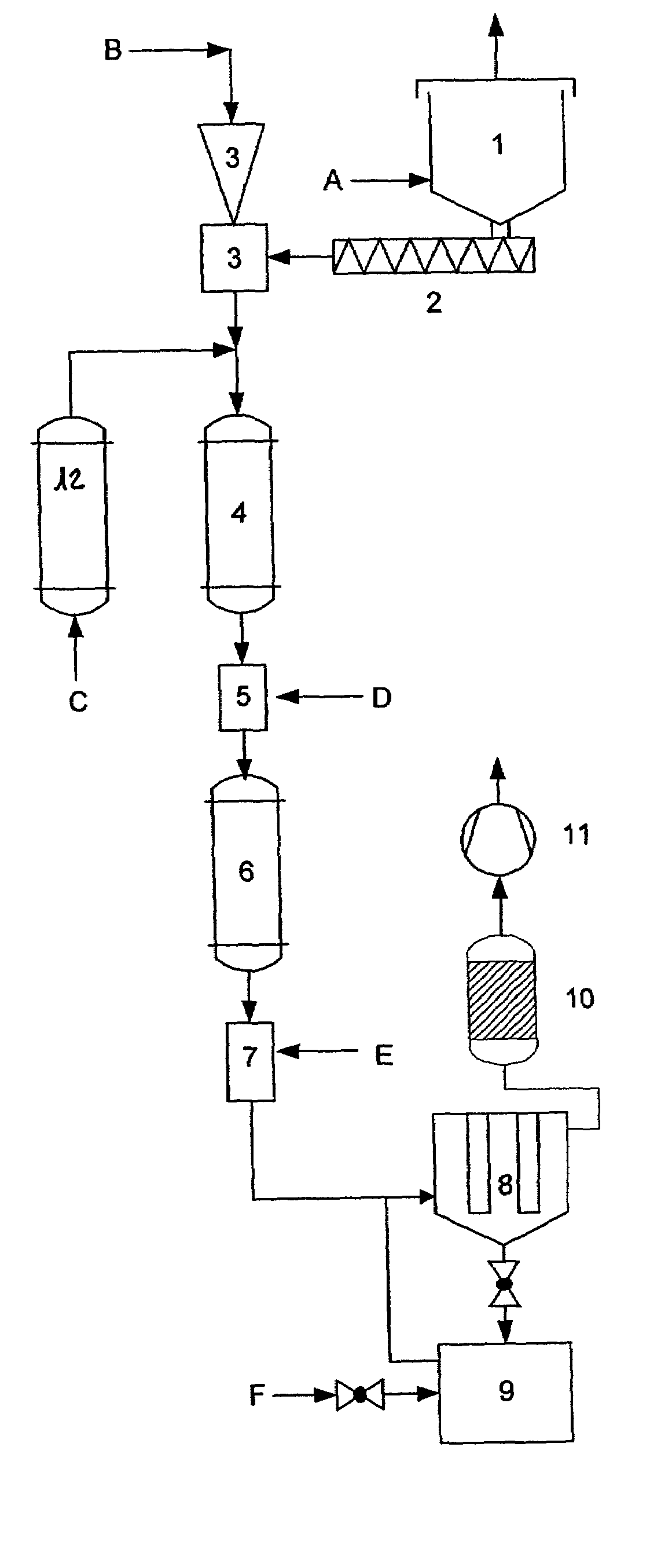Process and apparatus for the thermal treatment of pulverulent substances
a technology of thermal treatment and pulverizing substances, which is applied in the direction of physical/chemical process catalysts, calcination, metal/metal-oxide/metal-hydroxide catalysts, etc., can solve the problems of pulverulent substance caking, coarse lumps, and long treatment time, and achieve the effect of safe handling
- Summary
- Abstract
- Description
- Claims
- Application Information
AI Technical Summary
Benefits of technology
Problems solved by technology
Method used
Image
Examples
Embodiment Construction
[0053]This apparatus is characterised in that it comprises a storage container (1), a conveying screw (2) that together with a carrier system forms metering scales that are connected to an injector unit (3), the injector unit (3) being arranged at the upper end of a reaction section (4 to 7), and the reaction section (4 to 7) consisting of a heating zone (4), a conditioning unit (5), a second heating zone (6) and a quenching section (7).
[0054]Carrier gas may be fed into the reaction section (4 to 7) via a carrier gas preheating section (12).
[0055]The product is separated by means of a filter (8) and a product collecting vessel (9). The carrier gas is then scrubbed by means of the gas washer (10), the transportation and pressure in the device being regulated by means of the valve (11).
[0056]The process according to the invention as well as the apparatus according to the invention are described and illustrated in more detail with the aid of FIG. 1.
[0057]According to FIG. 1, the pulver...
PUM
| Property | Measurement | Unit |
|---|---|---|
| Temperature | aaaaa | aaaaa |
| Size | aaaaa | aaaaa |
| Energy | aaaaa | aaaaa |
Abstract
Description
Claims
Application Information
 Login to View More
Login to View More - R&D
- Intellectual Property
- Life Sciences
- Materials
- Tech Scout
- Unparalleled Data Quality
- Higher Quality Content
- 60% Fewer Hallucinations
Browse by: Latest US Patents, China's latest patents, Technical Efficacy Thesaurus, Application Domain, Technology Topic, Popular Technical Reports.
© 2025 PatSnap. All rights reserved.Legal|Privacy policy|Modern Slavery Act Transparency Statement|Sitemap|About US| Contact US: help@patsnap.com


